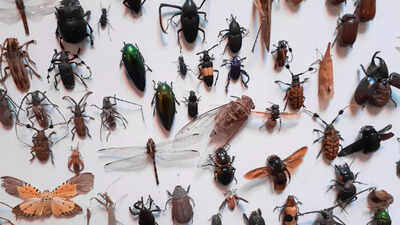ARTICLE AD BOX

Insects, the tiny creatures that quietly sustain much of life on Earth, are disappearing at alarming rates — even in landscapes far removed from direct human activity. A new long-term study led by researchers at the University of North Carolina at Chapel Hill has revealed that insect populations in a remote subalpine meadow in Colorado have plummeted by more than 72% over the last two decades.
The research, which monitored flying insect abundance between 2004 and 2024, links this drastic decline to rising summer temperatures. The findings raise urgent concerns about global biodiversity, food webs, and the health of ecosystems that depend on insects for survival.
Insects in untouched landscapes are rapidly declining
Associate professor Keith Sockman of UNC-Chapel Hill tracked insect populations over 15 field seasons in Colorado’s high-altitude meadows, a site largely shielded from farming, pollution, or urban expansion.
With 38 years of weather records available, the meadow provided a rare opportunity to study insect trends in a minimally disturbed ecosystem. The analysis revealed an annual average decline of 6.6% in insect abundance, accumulating to a staggering 72.4% loss across two decades.
Rising summer temperatures emerged as the strongest driver of these declines.
Why insects matter for ecosystems
“Insects have a unique, if inauspicious position in the biodiversity crisis due to the ecological services, such as nutrient cycling and pollination, they provide and to their vulnerability to environmental change,” Sockman explained.
These creatures are the foundation of terrestrial and freshwater ecosystems, supporting food chains, aiding in decomposition, and sustaining plant life through pollination.
Their decline signals risks that extend far beyond the insects themselves, potentially destabilizing ecosystems that humans also rely on for agriculture, clean water, and climate balance.
Climate change as the hidden culprit of insect vanishings
While previous studies of insect decline often focused on human-dominated landscapes such as farms, cities, or forests near industrial zones, this research highlights that even remote, seemingly untouched environments are not immune.
The strong correlation between hotter summers and insect losses underscores climate change as a key driver. Mountain ecosystems, which harbor high numbers of endemic species, are particularly vulnerable.
If insect declines continue at this rate, biodiversity hotspots may face irreversible damage.
A global warning and warming
Sockman’s findings align with reports of widespread insect losses across North America and Europe, but they add a critical new dimension: even ecosystems with minimal direct human interference are suffering sharp declines.
This makes climate change a more universal explanation than previously thought. For conservationists, it highlights the need to monitor insect populations not just in altered environments but also in pristine regions to fully grasp the global scale of the crisis.
What comes next
The research underscores the importance of addressing climate change as part of biodiversity protection. More comprehensive monitoring programs are needed worldwide to track insect populations across varied landscapes. Without urgent action, the collapse of insect communities could accelerate ecosystem instability and threaten the services that sustain human life.Insects may be small, but their disappearance carries enormous consequences. Protecting them means protecting the very systems that make Earth habitable.



.png)
.png)
.png)
















 1 hour ago
5
1 hour ago
5









 English (US) ·
English (US) ·